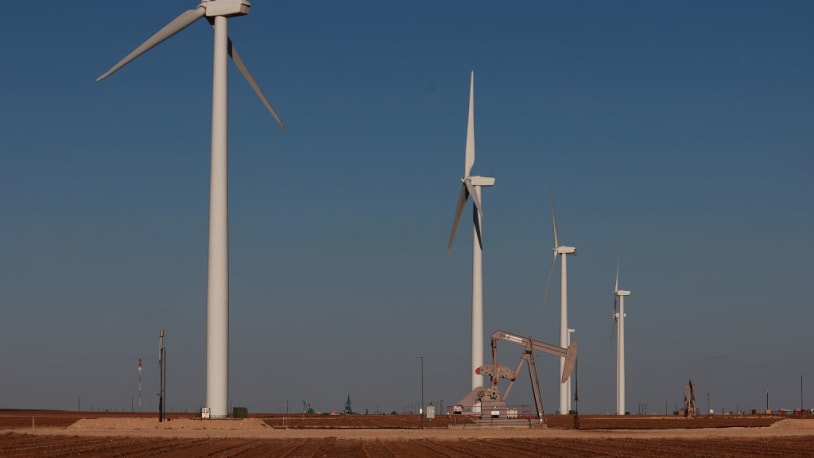
Texas will get more electricity from solar and wind power than natural gas next year, EIA projects
Texas will get the largest share of its electricity next year from solar and wind power, the U.S. Energy Information Administration projected it a short-term energy outlook report released Tuesday. Yes, Texas.
Overall, the U.S. is forecast to generate 16 percent of its electricity from wind and solar power in 2023, up from 14 percent in 2022, while natural gas generation will fall to 37 percent, from 39 percent this year, the EIA said.
Texas, meanwhile, “is likely to experience the largest shift in generation mix in 2023,” the EIA said, with natural gas falling to 36 percent, from 42 percent this year — and solar and wind power rising to 37 percent, from 30 percent in 2022. EIA administrator Joe DeCarolis shared the chart.
Texas, in fact, led the U.S. in renewable energy projects in 2021, the American Clean Power Association reported earlier this year, bringing 7,325 megawatts of new wind, solar, and energy storage projects online — versus 2,697 megawatt in the next highest state, California. “But what got my attention wasn’t Texas’ dominance in 2021,” Dan Gearino wrote in Inside Climate News. “It was that Texas also is the leader when ranking the states on how much wind, solar, and storage they have under construction or in advanced development.”
“Texas can claim, with ample evidence, to be the renewable energy capital of the United States,” Gearino wrote. “This is despite also being the fossil fuel capital of the United States, and having political leaders who go out of their way to defer to oil and gas.”
Texas leaders, lawmakers, and regulators are “putting their thumbs on the scale to reward fossil fuels at the expense of renewable energy,” which “is hardly surprising given the chummy relationship state officials have with oil and gas,” the Houston Chronicle says in an editorial. But it’s “bad news for residential consumers, particularly since wind and solar are often the most reliable energy sources during times of peak demand” — and much cheaper, too.
Texas is mostly “doing this because it makes financial sense,” not for environmental reasons, Joshua Rhodes, an energy expert at the University of Texas at Austin, told Inside Climate News. Texas, after all, has ample strong winds and bright sunlight. “There’s some dumb luck there,” Rhodes conceded, but the state’s unique market incentives help, too.
Texas will get the largest share of its electricity next year from solar and wind power, the U.S. Energy Information Administration projected it a short-term energy outlook report released Tuesday. Yes, Texas. Overall, the U.S. is forecast to generate 16 percent of its electricity from wind and solar power in 2023, up from 14 percent…
Texas will get the largest share of its electricity next year from solar and wind power, the U.S. Energy Information Administration projected it a short-term energy outlook report released Tuesday. Yes, Texas. Overall, the U.S. is forecast to generate 16 percent of its electricity from wind and solar power in 2023, up from 14 percent…